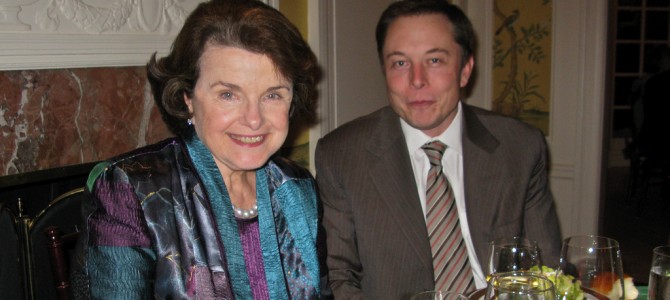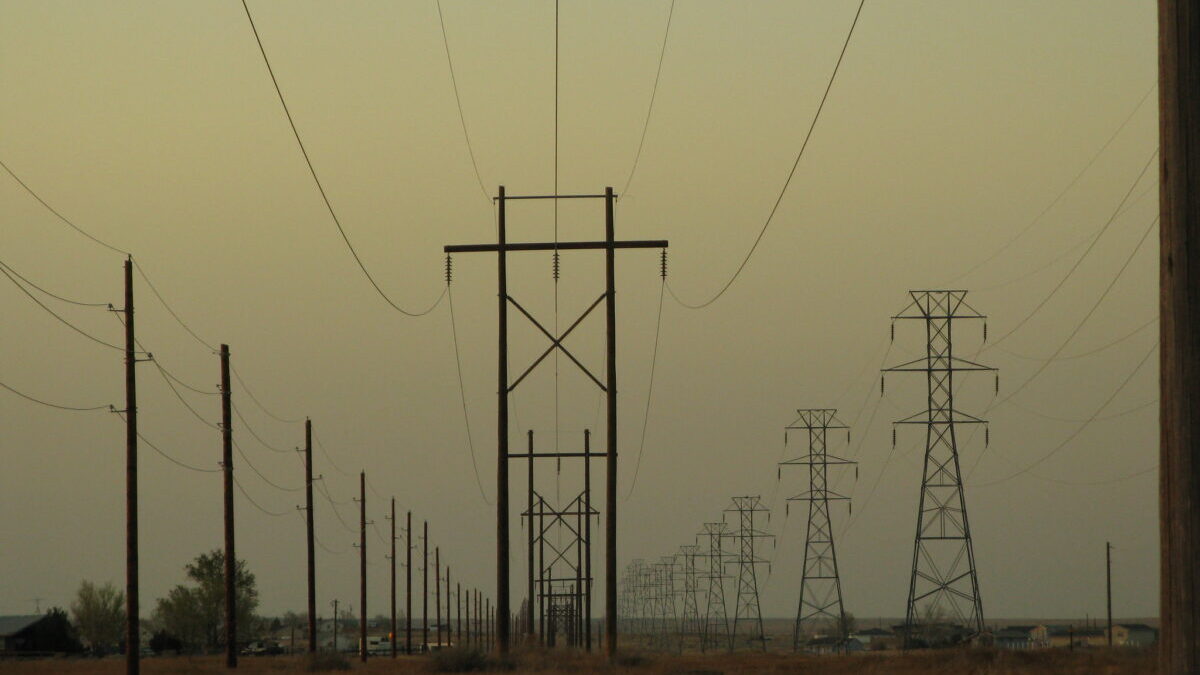Elon Musk, the PayPal co-founder who used his fortune to start a trio of “visionary” companies—Tesla, Solar City, and SpaceX—recently went beyond pitching the supposed virtues of his own technology and called for a broader social revolt aimed at taking down his rivals. Complaining that a “carbon tax” intended to fight global warming was being blocked by the machinations of the industrial-industrial complex, he declared “we need to appeal to the people and educate them to sort of revolt against this and to fight the propaganda of the fossil fuel industry.”
It’s worth pointing out that, depending on where you charge your Tesla, it may very well be powered by fossil fuels, just at a distance. This is the “long tailpipe,” which starts at your electric car, goes through the transmission wires, and ends with the smokestack of a coal-burning power plant. But Musk has also started Solar City, which has ambitions of charging electric cars using solar panels. That may well work—in sunny, southern locales.
But notice his big rationale for vilifying fossil fuels: “The fundamental issue with fossil fuels is that every use comes with a subsidy. Every gasoline car on the road has a subsidy, and the right way to address that is with a carbon tax.”
That’s pretty rich for a guy whose own businesses have been supported by $4.9 billion in government subsidies. That’s according to a tally by the Los Angeles Times. It’s worth reading the whole rundown, because it’s an extraordinary list of government loans and tax breaks, along with Musk’s personal role in demanding and negotiating them. It includes this real gem:
The Palo Alto company [Tesla] has also collected more than $517 million from competing automakers by selling environmental credits. In a regulatory system pioneered by California and adopted by nine other states, automakers must buy the credits if they fail to sell enough zero-emissions cars to meet mandates. The tally also includes some federal environmental credits.
It’s nice when you can get the government to force your competitors to subsidize you.
Meanwhile, let’s take a look at those vaunted oil and gas subsidies. According to a report compiled by environmentalists, they amount to about $20 billion in the United States, only four times what Musk’s three relatively small companies have raked in. Moreover, “almost all of those [are] received in the form of tax or royalty breaks.” There’s a big difference between the government paying your company cash—something Musk knows all about—and the government taking away less of your money because it allows a tax write-off that Musk doesn’t approve of.
Even the L.A. Times tally understates Musk’s subsidies. A recent overview of how the “Muskonomy” works indicates that his high-tech firms are just as much a triumph of “financial engineering.” Here’s the upshot. Musk collects giant up-front cash payments from NASA and the Air Force for future launches of SpaceX rockets, then uses that cash to provide loans to Solar City, which stores the energy gathered by its solar panels in batteries purchased from—no points for guessing—Tesla. It’s all nice and cozy.
But it also means the triad of Musk companies is dangerously interdependent. “If Tesla were to have a serious problem with battery production, that could lead to dire consequences for SolarCity, which would in turn have difficultly making the payments on the bonds that SpaceX holds.” And do you think Tesla might have problems? Well, to hit its stated targets and justify its astronomical stock price, Tesla needs to engage in an unprecedented tenfold expansion of its manufacturing capacity, without really knowing how to do that.
But the biggest Musk subsidy is the global warming crusade itself, which he uses to push people into over-paying for his cars. Even with government subsidies up to $10,000 per car (or more), the current Tesla Model S is extremely expensive, starting at $70,000 and going up to $108,000 depending on the features you want. This is justified by comparing the Model S to six-figure super-luxury cars, but the comparison doesn’t quite hold up. “It’s well-built and comely, even inside, and it does have a desktop-sized screen in its dash, but against the Mercedes-Benz S Class and BMW 7-Series, the Model S comes off as more of an up-market mainstream sedan in materials and design. Think premium Accord rather than Audi A8.”
This means you would come out way ahead by buying a very nice $45,000 car—and ten years’ worth of gasoline. Anything you pay beyond that is just an investment in a fashion statement: for the upper middle class, a Tesla in the driveway is a marker for one’s conspicuous dedication to the right social causes.
In short, Musk really needs global warming to be true, so it’s no wonder he’s so eager to promote it and use it as an excuse to tax his fossil fuel competitors.
The world needs its visionary billionaires, and I don’t fault Musk for trying to do big and new things, even if some of them (a million people on Mars!) are obvious flim-flam. What I object to is having him lecture us about other people’s subsidies while we’re paying for his experiments.
That’s because if the public ever rejects the global warming hype and figures out how much they’ve been paying to subsidize Musk’s “visionary billionaire” lifestyle, they might start revolting at that.
Follow Robert on Twitter.









